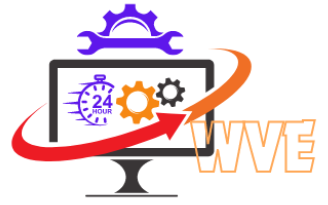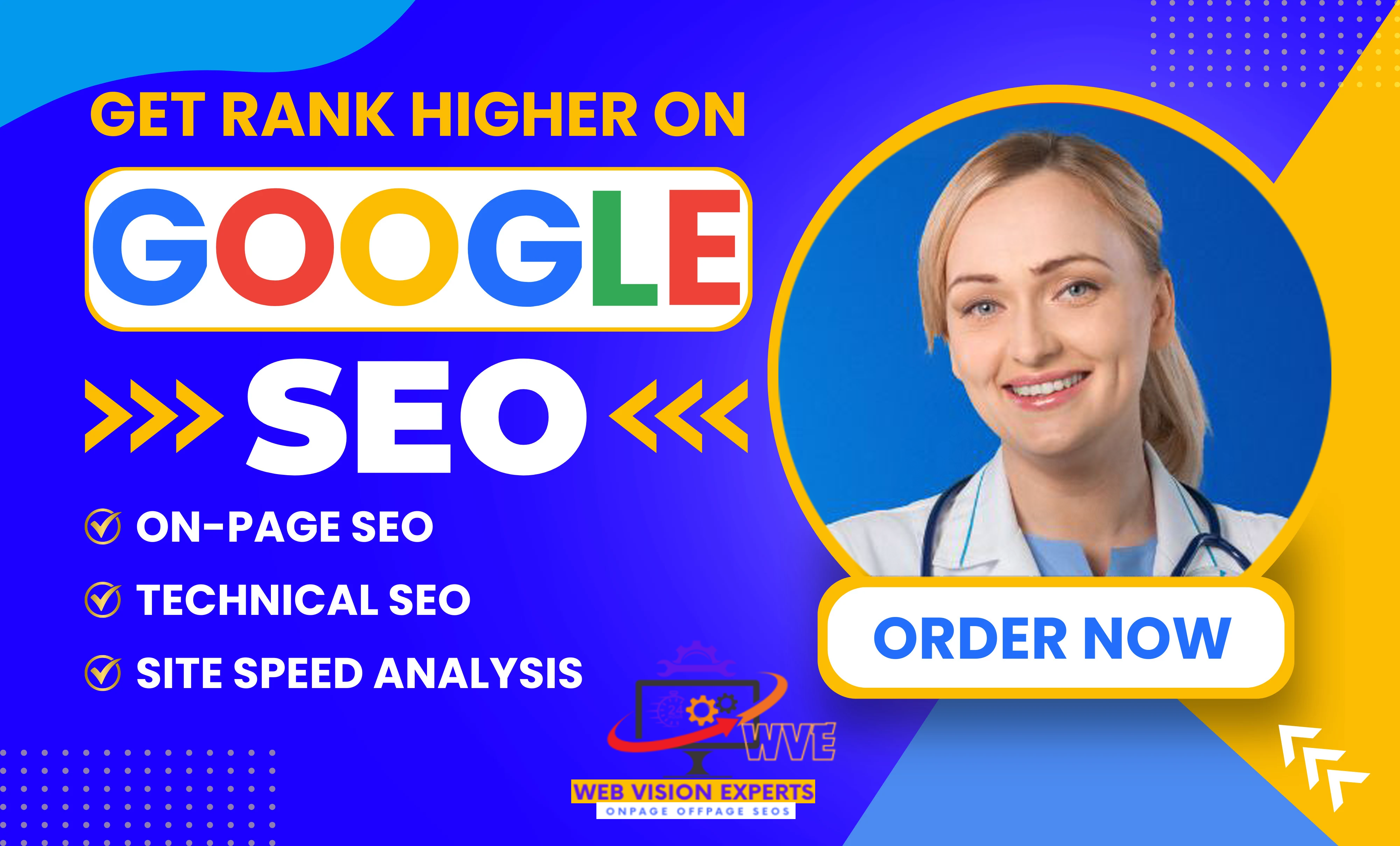The Complete, On Page SEO Visual Guide to in 2024 and 2025
If you’ve ever believed a top-ranking page on Google got there by sheer “luck,” it’s time to reconsider. Every site sitting at the peak of the SERPs owes its position to a carefully crafted strategy and plenty of behind-the-scenes effort.
If you’ve ever thought a top-ranking page on Google was there by “luck,” it’s time to think again. For any page sitting proudly at the top of the SERPs, there’s a ton of groundwork happening behind the scenes to make that possible.
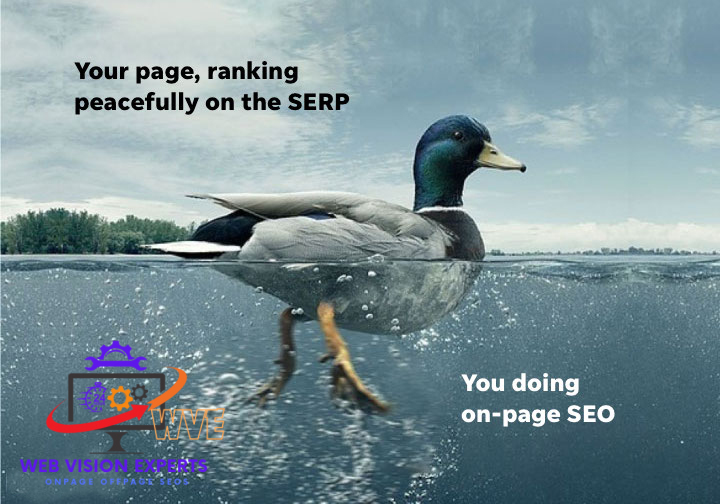
This groundwork is called SEO. But don’t worry—once you learn the ropes, it starts to feel like second nature. In this guide, I’ll simplify the process of on-page SEO into a clear, step-by-step visual walkthrough to help you achieve similar results.
Ready to rank higher and drive more traffic to your website? Let’s dive in. Quack 🦆
Contents
- What is on-page SEO?
- On-page SEO vs off-page SEO
- The 11-point on-page SEO checklist
- On-page SEO checkers
- On-page SEO templates
What is on-page SEO?
On-page SEO in 2024 and 2025 focuses on optimizing elements within a website to improve its search engine ranking, user experience, and overall visibility on search engine results pages (SERPs). It’s all about ensuring each webpage is set up to effectively communicate with search engines while also catering to user intent. Here’s how it’s evolving:

On-page vs off-page SEO
On-Page SEO:
On-page SEO focuses on optimizing elements within your website to improve search engine rankings and user experience. These optimizations make it easier for search engines to understand your content and assess its relevance to users.
Off-Page SEO:
Off-page SEO focuses on building authority, reputation, and popularity outside your website to increase its credibility and influence on search engines. It’s about gaining external validation that signals to search engines that your website is trustworthy and relevant.
Summary: On-Page vs. Off-Page SEO
- On-Page SEO: Internal optimizations that improve the website’s structure, content, and user experience.
- Off-Page SEO: External efforts that build authority and reputation through backlinks, social presence, and brand recognition.
Effective SEO strategies integrate both on-page and off-page SEO to maximize visibility, credibility, and engagement with target audiences.
On-page SEO checklist
- Keyword research
- Content quality
- Keyword placement
- Images
- Tile
- Headings
- Meta description
- URL
- Links
- Technical
- Content freshness
Keyword research On Page Seo
Use Keyword Research Tools
- Tools like Google Keyword Planner, Ahrefs, SEMrush, and Moz can help you find related keywords, search volume, keyword difficulty, and other insights.
- Google Trends is helpful for seasonal insights and emerging topics.
Consider Search Intent
- Search intent is crucial for SEO success. Keywords typically fall into four types of intent:
- Informational: Users looking for information (e.g., “how to do keyword research”).
- Navigational: Users searching for a specific site or page (e.g., “Google Keyword Planner”).
- Transactional: Users looking to make a purchase (e.g., “buy SEO tools”).
- Commercial Investigation: Users comparing options (e.g., “best SEO tools 2024”).
Analyze Search Volume and Competition
- Search Volume: Look for keywords with a search volume that aligns with your goals. High-volume keywords bring more traffic, but they’re often more competitive.
- Keyword Difficulty (KD): Check how competitive a keyword is. Targeting low-to-medium difficulty keywords can be more achievable for new or smaller websites.
Google your keywords.
- If you do all of the steps below but the content of your page doesn’t match the intent of the keyword you’re targeting, you’re not going to rank!
Keyword Research Tools
- Google Keyword Planner (free)
- Ahrefs
- SEMrush
- Moz Keyword Explorer
- AnswerThePublic (for topic inspiration)
- Google Trends
2. Content quality On Page Seo
Content quality is critical for effective SEO and user engagement. High-quality content not only meets the needs of your audience but also aligns with search engine algorithms that prioritize relevance and authority. Here’s a comprehensive look at what constitutes content quality and how to achieve it:
1. Relevance to Audience
- Target Audience Understanding: Know your audience’s needs, interests, and pain points. Tailor your content to address these aspects effectively.
- Search Intent Alignment: Ensure that your content matches the intent behind the keywords you’re targeting, whether informational, navigational, transactional, or commercial investigation.
2. Originality and Uniqueness
- Avoid Plagiarism: Create original content that offers new insights or perspectives. Duplicate content can harm your rankings and credibility.
- Fresh Perspectives: Even on common topics, strive to present unique angles or information that sets your content apart from competitors.
3. Depth and Comprehensiveness
- Thorough Coverage: Address the topic comprehensively, providing detailed information that answers potential questions users might have.
- Content Length: While there’s no ideal word count, longer content tends to perform better if it provides valuable information. Aim for depth rather than fluff.
4. E-A-T (Expertise, Authoritativeness, Trustworthiness)
- Expertise: Showcase knowledge of the subject matter, potentially through credentials, research, or firsthand experience.
- Authoritativeness: Link to reputable sources and ensure your site is recognized as an authority in your niche.
- Trustworthiness: Maintain transparency, accuracy, and ethical standards in your content. Clearly cite sources and provide disclaimers when necessary.
5. Readability and Engagement
- Clear Structure: Use headings, subheadings, bullet points, and numbered lists to break up text and improve navigation.
- Visual Elements: Incorporate images, videos, infographics, and charts to enhance engagement and understanding.
- Concise Language: Use straightforward language and avoid jargon unless necessary. Aim for clarity and simplicity.
6. Proper Use of Keywords
- Natural Integration: Incorporate primary and secondary keywords organically within the content, avoiding keyword stuffing.
- LSI Keywords: Use related terms and phrases to enhance context and relevance.
7. SEO Best Practices
- Optimized Titles and Meta Descriptions: Create compelling titles and descriptions that include keywords and entice users to click.
- Internal and External Links: Use internal links to guide users to related content on your site and external links to credible sources for additional context.
8. User Experience (UX)
- Mobile Optimization: Ensure content is easily accessible and readable on mobile devices.
- Fast Loading Speed: Optimize images and code to reduce load times, enhancing user experience.
9. Regular Updates
- Content Refreshing: Regularly update content to keep it current, especially for topics that change over time.
- Monitoring Performance: Use analytics tools to track engagement metrics and make adjustments based on user feedback.
Measuring Content Quality
- User Engagement: High engagement metrics (e.g., time on page, low bounce rates) indicate that users find your content valuable.
- Social Shares and Backlinks: High-quality content is more likely to be shared and linked to by others, enhancing your authority.
- Search Rankings: Monitor your page rankings for targeted keywords; higher rankings usually reflect better content quality.
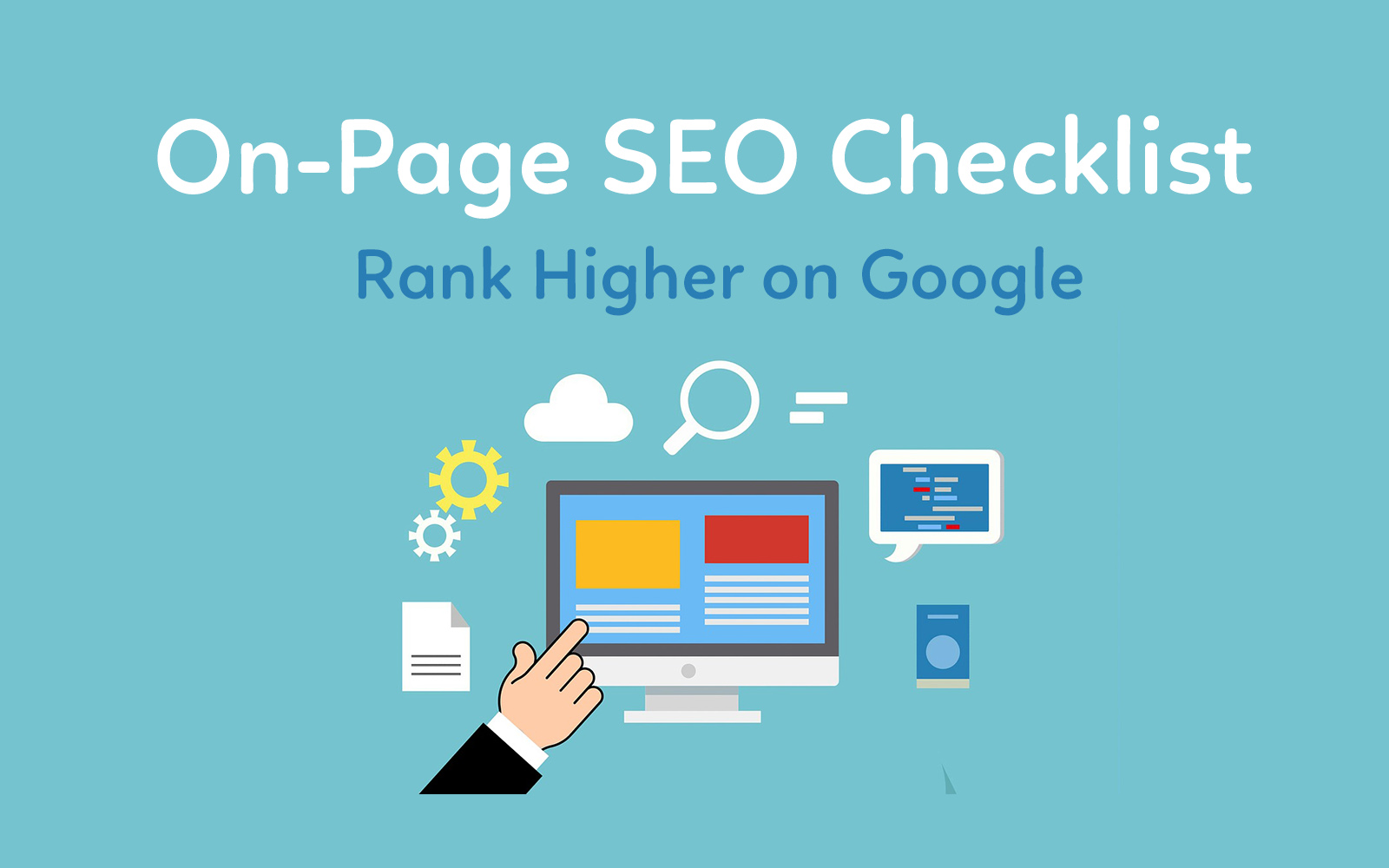
3. Keyword Placement On Page Seo
When writing quality content, your primary and related LSI (Latent Semantic Indexing) keywords should flow naturally within the text. However, you should intentionally place your target keyword in the following areas:
- Page Title: This is the title displayed on the page.
- Title Tag: This is the title that appears in search results.
- First 100 Words: Incorporate the keyword naturally within this section.
- Headings: Ideally, use it in at least two H2 headings.
- Meta Description: This is the summary that appears in search results.
- Image Alt Text: Provide text alternatives for images.
- Image File Name: Avoid generic names like “Screenshot-1”; use descriptive filenames.
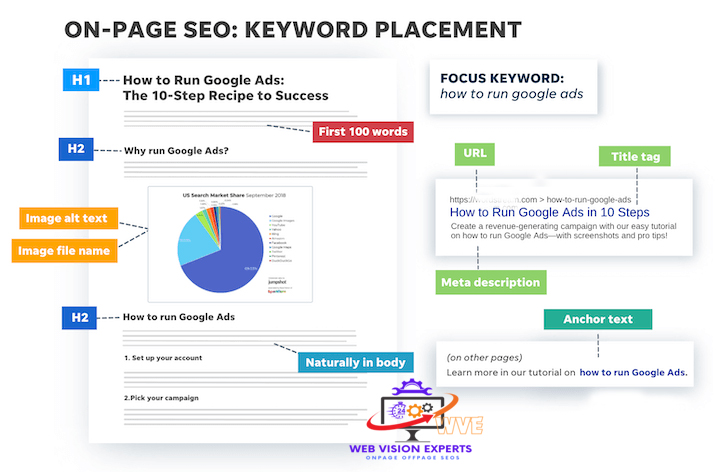
4. Images On Page Seo
Images enhance engagement, which contributes to longer time spent on the page—a factor in ranking. Here’s how to optimize images effectively:
- Optimize for Speed: Resize images to fit your page’s maximum width and compress them to reduce file size without losing quality. Tools like TinyPNG can help.
- Add Alt Text: This describes the image for both search engines and visually impaired users. Include your target keyword when appropriate.
- Convey Value: Use images to illustrate concepts, like graphs and screenshots, rather than using empty graphics.
- Don’t Replace Text with Images: Ensure that information conveyed through images is also included in the body text for clarity.
- Optimize Filenames: Name image files descriptively with the target keyword, replacing spaces with dashes or underscores.

5. Title On Page Seo
Each web page has two distinct titles:
- Title Tag: Also known as the meta title or SEO title, this appears in search results. Aim for a length of 60 characters or less, front-loading with the keyword.
- H1 Tag: This is the title that users see on the page. You can be more creative here, but it should still contain the keyword.
Your title tag and H1 tag can be the same, but it’s useful to know that you have options. A strong title is crucial for on-page SEO, as it influences whether users click on your link. An effective title should:
- Convey Value: Clearly state what the reader gains, e.g., “7 Yoga Poses That Improve Sleep.”
- Avoid Overpromising: Be honest about the content’s scope to prevent user disappointment.
- Be Descriptive: Use specific terms rather than vague labels, e.g., “Affordable Norfolk Landscaping Service Packages” instead of just “Services.”
- Engage Interest: Utilize power words without resorting to caps, exaggeration, or exclamation points.
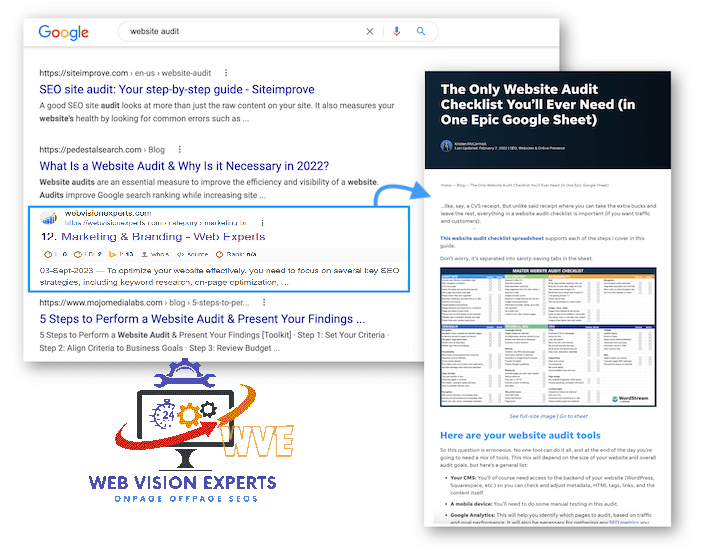
6.Headings On Page Seo
Headings are essential elements in your on-page SEO strategy, as they provide structure to your content and enhance readability for both users and search engines. Here’s how to effectively use headings:

Headings are crucial for organizing your content and improving SEO. They create a clear structure, making it easier for both users and search engines to understand your content. Here’s a breakdown of heading tags and their roles:
1. H1 Tag
- Usage: There should be only one H1 tag per page.
- Purpose: Represents the main title of the page or post. It should summarize the content and include the primary keyword.
- Example:
2. H2 Tags
- Usage: Use multiple H2 tags for major sections of your content.
- Purpose: Break down the content into main topics or themes. H2s provide a clear structure and allow for easy navigation.
- Example:
3. H3 Tags
- Usage: Use H3 tags for subsections within H2 sections.
- Purpose: Further break down topics and provide additional detail under each main heading.
- Example:
4. H4, H5, and H6 Tags
- Usage: These tags are used for even more granular subheadings if needed.
- Purpose: They continue to provide structure and clarity, especially in lengthy or complex content.
- Example:
Best Practices for Using Headings
- Consistency: Keep a consistent style and hierarchy throughout your content. This helps users and search engines understand the structure easily.
- Keywords: Naturally include relevant keywords in your headings, but avoid overstuffing.
- Clarity: Make each heading clear and descriptive, giving readers a preview of what to expect in that section.
- Scannability: Use headings to create a scannable format. This enhances user experience and encourages readers to engage with your content.
- Visual Separation: Use headings to visually separate different sections, making it easier for readers to navigate your content.
By effectively using H1, H2, H3, and other heading tags, you can improve the readability of your content and enhance your on-page SEO efforts.
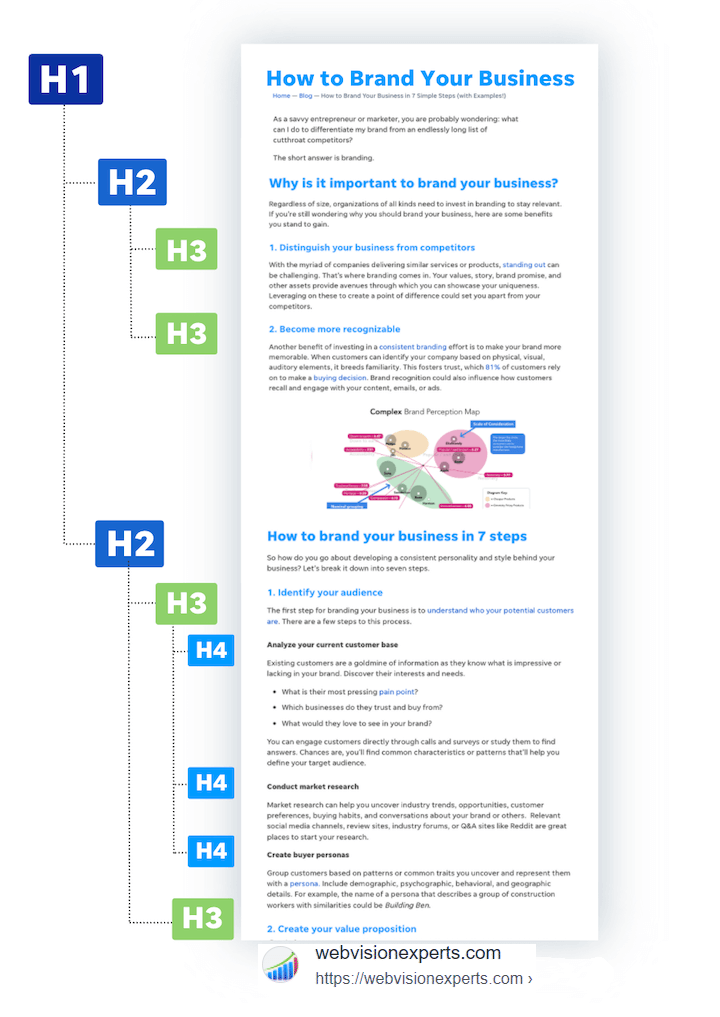
Meta Description On Page Seo
The meta description is the brief summary of your page that appears below the title on the search engine results page (SERP). Think of it as an “ad” for your page; a well-crafted meta description attracts searchers by promising to answer their query, encouraging them to click. Here’s a quick checklist for creating an effective meta description:
- Keep it concise: Aim for 155-160 characters.
- Include target keywords: Use your primary keyword, and add related keywords if it flows naturally.
- Make it actionable: Communicate a clear benefit to the reader. For instance:
- “This guide offers a list of impactful words to enhance your marketing content.”
- “Get inspired with over 350 power words and phrases to use in emails, blogs, ads, and more!”
- Dynamic use by Google: Google may generate a description from your content depending on the query, so ensure your headings and subheadings are relevant.
- Optimize for previews: Meta descriptions also show up in link previews on social media, so make sure they’re engaging.
A strong meta description not only improves click-through rates but also strengthens your SEO by aligning with user intent across different search contexts

8. URL On Page Seo
Most content management systems (CMSs) automatically generate a URL for your page, often based on the title you’ve provided or as a random string of numbers. It’s important to customize this URL to:
- Include your target keyword.
- Use dashes instead of spaces.
- Keep it concise; typically, the keyword alone is sufficient.

9. Links On Page Seo
External Links
External links point from your page to other domains. A best practice in on-page SEO is to link to high-quality, authoritative websites relevant to your topic. This not only enhances the credibility of your content but also helps Google view your page as trustworthy. In his SEO techniques post, Brian Dean recommends linking out to at least three reputable domains.
Internal Links
Internal links direct readers to other pages within your website. It’s essential to incorporate internal links on the page you’re optimizing, and ensure that other pages on your site also link back to it.
When creating links, use specific anchor text that relates to the page you’re linking to and includes the target keyword. This approach improves user experience and increases your chances of ranking higher, as more links with keyword-rich anchor text enhance your page’s authority (for more, see our guide on keyword mapping).
10.A Few Technical Optimizations
I know this isn’t a technical SEO checklist, but as mentioned earlier, the different types of SEO are interconnected. Here are some essential technical elements that should be in place, but can sometimes encounter glitches. These tips can help troubleshoot if your page isn’t performing as expected:
- Mobile-Friendliness: Your site should be built with responsive design to ensure it adjusts seamlessly to any screen size. However, certain elements—like embedded videos or tables—might not display correctly on mobile. Double-check that everything appears as it should.
- Crawlability: Your page can’t rank if it’s not indexed, and it can’t be indexed if it’s not crawlable. If your website appears in the SERPs, it’s indexed. However, blog posts or pages may inadvertently become unindexed. If you notice unexpectedly low traffic, check the back end of your page in your CMS to ensure indexing is enabled. If it is, use Google Search Console to troubleshoot further.
- Social Share Buttons: Implementing social share buttons at the site level—usually via a plugin—can help others easily amplify your content. Just ensure that the plugin doesn’t negatively impact your site’s speed.
- Page Speed: Page speed is a crucial ranking factor, and oversized images are just one of many potential culprits. Use tools like PageSpeed Insights to evaluate the loading speed of your pages. They will also provide recommendations on how to improve your score if it’s below par.
By keeping these technical optimizations in mind, you can enhance your on-page SEO and ensure your content performs to its fullest potential.
